Tattoo Pain Chart: Least & Most Painful Places To Get A Tattoo
Let's add to the excitement of getting inked- whether it's your first time or nth.
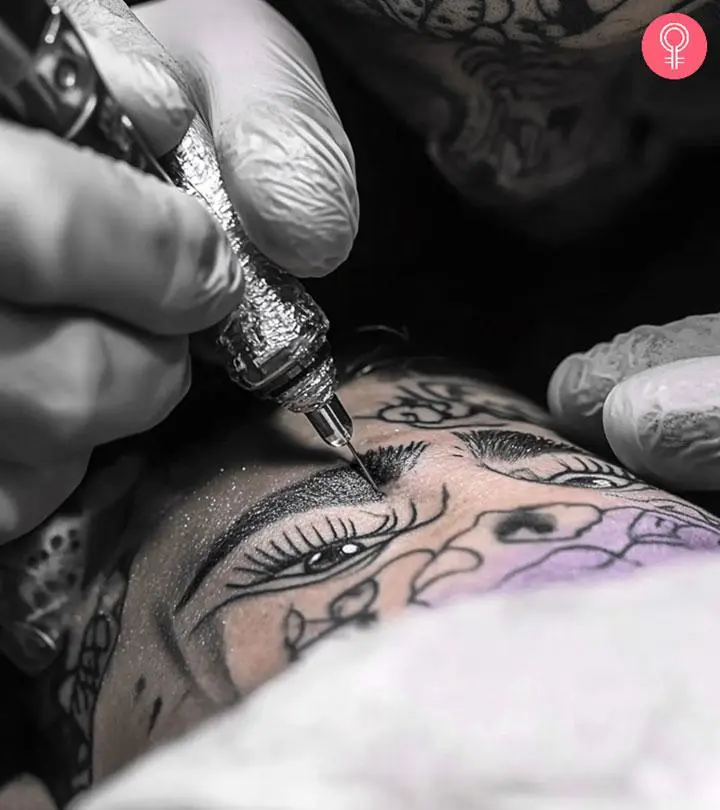
Image: Midjourney/ StyleCraze Design Team
People want to know about the most painful locations to get a tattoo either because they want to avoid those areas or they want an appointment in one of these to get tattooed right in one of them. So, which camp do you belong to?
If you are new to getting inked, you probably belong to the former group and want to get your first tattoo on some part which is least likely to hurt. Well, all tattoos will hurt, but the pain is tolerable and completely worth it, as any tattoo enthusiast would tell you. No matter whether you are apprehensive or are looking to test the limits of your pain threshold, you are at the right place. In this post, we’ve answered the most frequently asked questions about tattooing, the pain you feel after getting one, and which are the most painful tattoo spots. We’ve also included some suggestions for reducing pain when getting tattooed. But first, let’s tackle the most obvious concern.
In This Article
Does Getting A Tattoo Hurt?
Yes, getting tattooed hurts. Tattoos are inked with specially designed needles that prick your skin at a very fast speed. The speed is fast enough to pierce your skin but slow enough that it does not tear, but can make you feel discomfort or pain. Therefore, there is no bleeding during the tattoo process. Tattooing requires the needle to go beyond the superficial layer of the skin. This layer is known as the dermis. The dermis is capable of healing itself. That is why a tattoo must go beyond the dermis to stay permanent.
Getting tattooed on certain areas of the body can cause more pain than others. The following tattoo pain chart sheds more light on the same. It also helps you prepare yourself for any potential discomfort. Continue reading.
Getting tattooed on certain areas of the body can cause more pain than others. The following tattoo pain chart sheds more light on the same. It also helps you prepare yourself for any potential discomfort. Continue reading.
Key Takeaways
- The tattooing process requires a needle to pierce the skin, making it painful.
- The most painful places to get a tattoo include the armpits, ribcage, and spine, while tattoos on forearms, upper back, and calves tend to hurt the least.
- Apart from placement, factors like skin sensitivity, age, and the artist’s technique and experience affect the pain level you experience when getting a tattoo.
- You may minimize this pain by ensuring you are well-rested, sober, hydrated, and fed before the appointment.
Tattoo Pain Chart
The tattoo pain chart serves as a subjective guide for individuals contemplating body ink. Ranging from minimal discomfort to intense sensations, it categorizes body areas based on the pain levels one may experience during the tattooing process.
Check out the tattoo pain chart for men and get the lowdown on which spots might sting a bit more. This would be your cheat sheet for a smoother ink session!
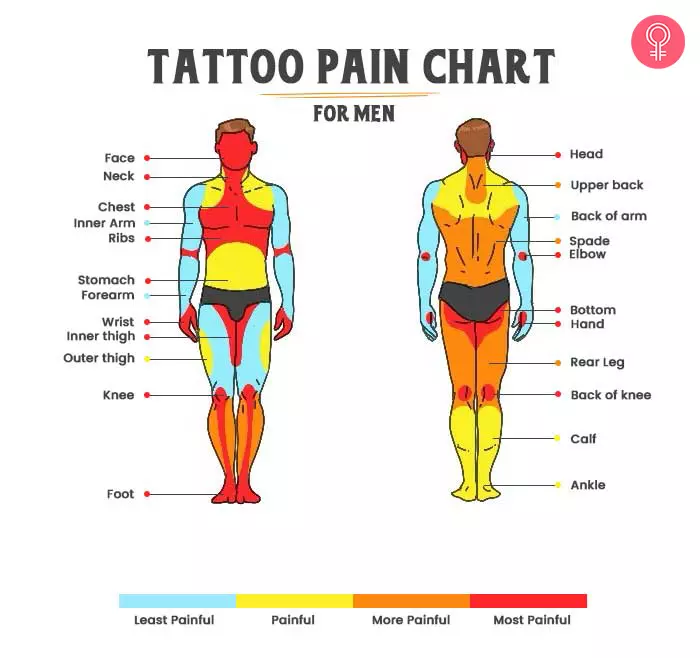
Ladies – the following tattoo pain chart for women is your go-to guide should you choose to dive into the tattoo world. Learn more about the areas that could be a breeze and those that may give you the pinch.
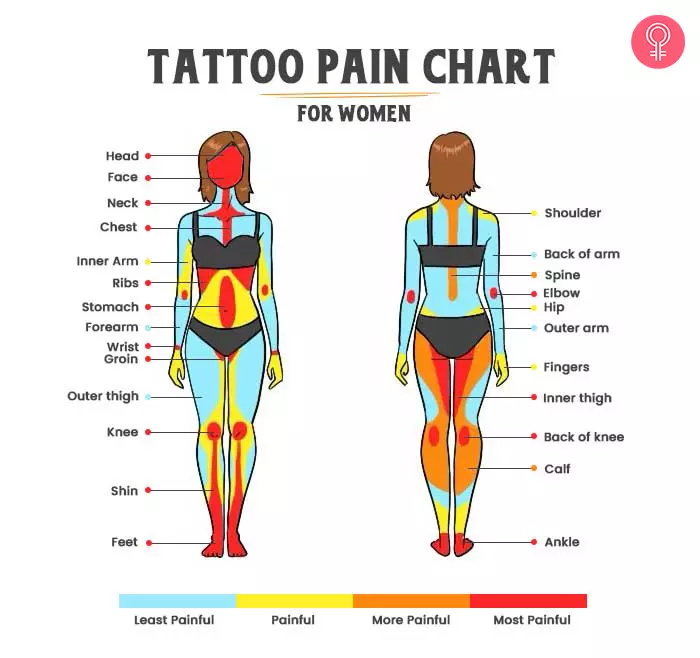
While tattoos are generally painful, some body parts can amplify the discomfort. Learn more about such agonizing and painful spots in the section below.
What Are The Most Painful Places To Get A Tattoo?
Getting a tattoo is going to be painful no matter where you get it. But, certain areas hurt way more than others. Think twice before getting a tattoo on any of the following places:
1. Armpit
The armpit is one of the places that hurts the most when getting a tattoo will hurt a lot.
It is also considered to be the most difficult place to get inked. Many experienced tattoo artists advise against an armpit tattoo.
Pain level: 9/10
2. Ribcage
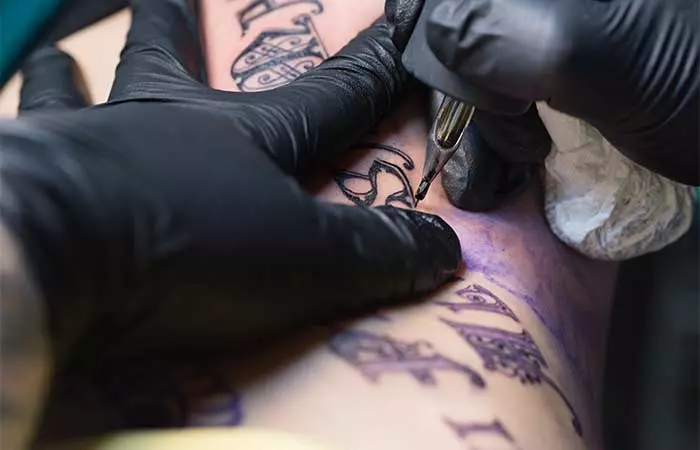
The rib cage is a structure full of bones. It also moves every time you take a breath. This can interfere with the tattooing process and cause extreme pain, and hence is considered the most painful place to get a tattoo.
Pain level: 9/10
 Quick Tip
Quick Tip3. Ankles, Shins, Feet, And Toes
The skin on ankles and shins is very thin, so getting inked there can be quite an experience. So, if you have been wondering “do ankle tattoos hurt?”, the answer is – yes, they do. You will feel an intense, sharp, and vibrating pain in these areas, making ankle tattoos some of the more painful spots to get tattooed.
Pain level: 9/10
Kaelah recounts her experience of getting her feet tattooed in one of her blog posts, mentioning, “By the time the other foot was done and I was ready to head home, I could barely walk. In fact, I could barely waddle to the car. Driving home (all 4 or so miles) was torture due to the swelling and tightness of the skin (i).”
4. Nipples And Breasts
Nipples and breasts are some of the most sensitive areas of your body. While they are mostly muscle, they also have lots of nerve endings that make them extremely sensitive to pain.
Pain level: 7/10
5. Groin
The groin is filled with nerve endings that make it sensitive. It is also connected to various lymph nodesi Small, bean-shaped structures in the immune system that stores white blood cells to help fight infection. , which just increases the pain level.
Pain level: 8/10
6. Elbows And Knees
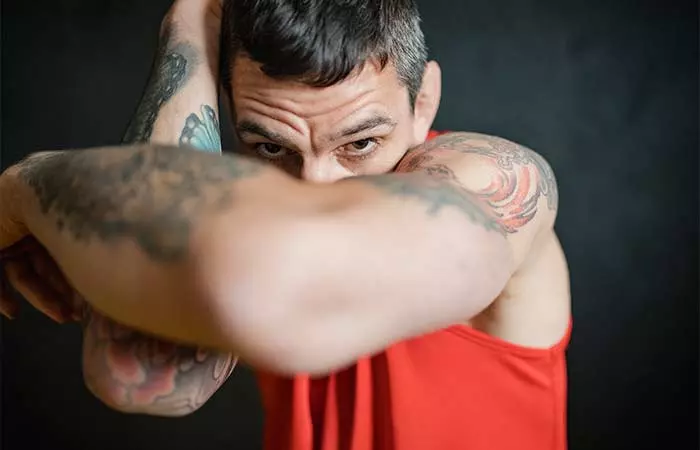
Elbows and knees are areas with the least amount of muscular padding. The bones lie beneath very thin, sheer skin. Tattooing on the elbow, knee, elbow ditch, or knee ditch may cause a sharp, intense pain.
Licensed Tattoo Artist, Jingxi Gu, says, “Both the inner and outer elbow areas are painful to tattoo on. So when designing a tattoo, I always try to limit the amount of tattooing I do in this area.”
Pain level: 8/10 for elbows, 10/10 for knees
7. Hips
The pelvic bone, which lies in the hip region, is covered by a very delicate layer of skin. If you are thin or have less fat around the hips, getting a tattoo on your hips may hurt a lot. It is described as a sharp, intense, vibrating pain.
Pain level: 8/10
8. Neck And Spine
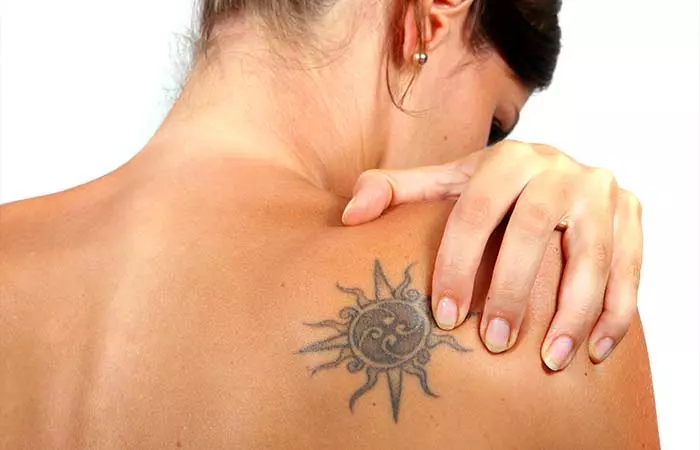
The neck and spine are very sensitive parts of the body. Thousands of nerves pass through them, and the pain felt here is quite intense. While the pain on the back of the neck might still be bearable, getting a tattoo on the front of the neck is intensely painful.
Pain level: 7/10
9. Head, Face, And Ears
The head, face, and ears have almost no cushioning of muscle or fat. As they are so close to the brain, many nerves run through these areas.
Pain level:8/10
10. Lips
The lips and the inside of the mouth are crowded with nerve endings. These areas are generally super sensitive and bleed at the slightest pressure. Applying a tattoo needle here is bound to be both bloody and painful.
Pain level: 6/10
11. Hands And Fingers
Hands and fingers experience quite a bit of wear and tear due to constant contact with the outside world. These are also places with lots of major nerve endings. Their boney structure may cause a lot of pain during the inking process, and their constant movement may hinder the healing of a tattoo.
Pain level: 8/10
12. Stomach

The stomach is quite a painful area to get a tattoo. Some might say they don’t feel pain here, but it largely depends on your shape and lifestyle. People who have higher weight generally have looser skin, and tattooing on loose skin is very painful. On the other hand, people who have lower weight and tighter skin will not feel as much pain. If you sleep on your stomach or are ticklish, you may want to reconsider getting a tattoo on your stomach.
Pain level: 6/10
13. Inner Thigh
The inside and back of the thighs are some of the most painful places to get a tattoo. Some major nerves pass through your thighs, which don’t see much movement or contact with external forces. Therefore, there is a chance that they may heal without any major hiccups.
Pain level: 7/10
14. Inner Bicep
The inner bicep
is a highly sensitive area. It also experiences quite some wear and tear due to the constant friction it undergoes. The thin, delicate skin there is quite sensitive to pain.
Pain level: 6/10
15. Behind The Knees
The elastic skin just behind your knees is covered with nerve endings. This makes the area particularly sensitive to pain. Additionally, the area’s proximity to the joint adds to the discomfort during the tattooing process.
Pain level: 7/10
Now, check out the places that are comparatively less painful to get a tattoo.
What Are The Least Painful Places To Get A Tattoo?
Getting a tattoo is painful. But, there are places on your body that may hurt relatively less during the process. Knowing which areas are least painful can also help first-time tattoo seekers make more informed decisions. Check out the least painful tattoo spots below:
1. Upper Or Outer Thigh
The upper or outer thigh is one of the places where you feel the least pain. The pain felt from tattooing here is a dull background pain.
Pain level: 4/10
2. Forearm
The forearm has thick skin and is padded with muscles. This place is an ideal canvas for a tattoo artist.
Pain level: 3/10
 Trivia
Trivia3. Shoulder And Outer Bicep
Shoulders and outer biceps have thicker skin and lots of muscles, making them less susceptible to pain. It is considered the least painful place to get a tattoo.
Pain level: 3/10
4. Upper And Lower Back
The back, in general, is not a very painful place to get tattooed. If you are a person who is boney, you may feel more pain around the shoulder blades and atop the spinal cord.
Pain level: 4/10
5. Calves
The calf muscles are abundant in fat and muscle tissue and have fewer nerve endings. Hence, tattooing on them is generally less painful. The added padding and lower skin sensitivity make the whole experience more tolerable.
Pain level: 4/10
How Painful Is A Tattoo?
Tattoo pain can vary from person to person. While some people may not even blink at the pain, others may bawl their eyes out. Hence, it is important you figure out your pain threshold and inform your tattoo artist about the same. Pain can be described in many different ways. Based on anecdotal evidence, a few types of sensations the tattooing process can cause are described as:
- Burning: You may feel something hot is being pressed against your skin. While it is not very intense, it is noticeable. This occurs especially when the tattoo artist works on a particular area for quite some time.
- Dull: This sensation is what everyone prefers to experience. It is a muted pain that you can easily distract yourself from. You may feel it once or twice, though it does not last long.
- Scratching: This feels like being scratched by a cat or getting a paper cut. While it is not intense, it does hurt a bit.
- Sharp: Sharp pain is also known as stinging pain. This is an intense pain that is caused by the tattoo needle drawing fine designs or going a little deeper than usual. It may even make you pass out if it gets too intense. This pain is commonly felt in places with thinner skin or right above a bone where there is not enough muscle.
- Vibrating: Vibrating pain is described as pain that moves along with the vibrations of the needle. This happens when the needle pierces the skin and gets too close to the bone. The nerves around the bone pick up on these vibrations and cause a vibrating sensation around the area with the pain. You may experience it most often on the outer wrist, ribs, ankles, and knees.
Tattoos generally hurt. However, certain factors usually determine the intensity of this pain. Learn more about them in the next section.
What Factors Affect The Pain Caused By Tattooing?
- Placement: The placement of your tattoo plays an immense role in the pain you feel. If it is on a place where the level of pain is generally high, like the ribs or fingers, it will be quite painful.
- Skin Sensitivity: If you have generally sensitive skin, it can be a problem when getting a tattoo. Sensitive skin bleeds easily and hurts a lot.
- Mental Preparation: If you are not mentally prepared or get queasy at the sight of blood or needles, the pain from tattooing might feel overwhelming and nauseating. Your mental state and anxiety can also affect the way you perceive pain. The more anxious and scared you feel at the start of the session, the more chance of you feeling greater pain.
- Age: An older person may have sagging skin. Older skin generally bruises quickly and bleeds more compared to younger skin.
- Experience: People who have already gotten a tattoo before feel less pain compared to people who are getting a tattoo for the first time.
- Health: Health issues like blood pressure problems and blood-related disorder scan make tattooing a complicated and painful process.
- Gender: While some believe that pain tolerance may vary between genders, it’s important to note that individual differences play a more significant role. Cultural and societal factors may also influence perceptions of pain.
- Tattoo Size: Larger tattoos generally take longer to complete. This prolonged exposure to the tattoo needle can cause increased discomfort.
- Artist’s Technique: The skill and technique of the tattoo artist play a significant role in the overall experience. An experienced and skilled artist may work more efficiently and with a lighter touch to reduce the perception of pain. Conversely, an inexperienced artist or one with a heavy hand may cause more discomfort.
- Type Of Tattoo: Different tattoo styles and techniques can influence the pain one experiences. For example, line work and shading may produce different sensations. Additionally, styles that involve more continuous or repetitive motions may impact pain perception.
The good news is that you can take steps to reduce and manage the pain that you experience when getting tattooed. Find out more in the next section!
How To Minimize The Pain Caused By Tattooing
- Have a good night’s sleep. A good night’s sleep will make you feel more comfortable and prep your body for a tattoo. You will also be more relaxed and less anxious when you are well-rested.
- Stay sober! Alcohol thins your blood, which is bad for the tattooing process. Apart from this, getting a tattoo under the influence of alcohol may lead to some less-than-desirable results.
- Ask your tattoo artist about numbing creams. Using a numbing cream may reduce the pain.
- Don’t eat right before getting a tattoo on your stomach.
- Make sure your tattoo artist is experienced and certified.
- Take some candy or your earphones. Music and food can distract you from the pain and the tattooing process.
- Follow proper aftercare. Tattoos require time and care to heal properly. Follow the detailed instructions properly to avoid post-tattoo pain.
- Drink plenty of water to stay hydrated during the process.
- Bring a companion. Don’t bring too many people but someone who can boost your morale.
- Be sure about your tattoo. Make sure that you are completely committed to getting a tattoo. If you are skeptical about getting a tattoo, you may be skeptical about the process, which may cause pain.
Here are some more things that you can do before getting a tattoo to make the process more comfortable.
What To Do Before Getting A Tattoo?
- Stay Hydrated: Make sure that you drink loads of water before the tattoo session. Tattooing takes quite a bit of time. Make sure that you are hydrated so as to not take water breaks when getting inked. Hydrated skin also takes to ink faster and more easily.
- Eat Well: Getting a tattoo takes time and energy. Not eating before a tattoo may cause low blood pressure and make you feel lightheaded. Have a good and healthy meal full of proteins and carbohydrates before getting a tattoo.
- Plan Ahead With Your Tattoo Artist: Talk to your experienced artist about the design, size, and tattoo placement ideas and how to take care of it so that it heals quickly. Remember, tattoos with color take the longest to heal.
- Wear Comfy Clothes: Chances are that you will need to be at the tattoo studio for a good few hours. So, might as well be comfortable, right? Dress comfortably and in something that will give the tattoo artist easy access to the body part you wish to get tattooed
- Avoid Alcohol And Blood-Thinning Medications: Alcohol and medicines like Aspirin thin out the blood. Thinner blood increases your chances of bleeding. This means that while under the influence of certain medicines or alcohol, even small tattoos may bleed profusely. Also, avoid taking analgesics and painkillers before tattooing as they thin the blood.
- Choose Your Tattoo Artist Wisely: Make sure to find a professional artist who is able to understand your ideas and is someone who follows the rules. It is important to see if he is using clean equipment and new needles each time. Make sure that he is a certified tattoo artist.
- Do Not Get A Tattoo While Sick: If you have a cold or a fever, it is best to postpone getting your tattoo. If your body is not in a healthy condition, you may risk the tattoo getting infected and delay the healing process.
- Be Mindful Of The Timing: Tattoos take time to heal. Be mindful about when you are getting a tattoo. Don’t get a tattoo if you are planning on swimming in the foreseeable future. Tattoos need a few days away from water and sunlight. Plan your schedule in a way that won’t hinder the healing of your tattoo.
While you know tattooing is painful, what about removing a tattoo? Check out the next section to learn more.
Is Laser Tattoo Removal Painful?
Laser tattoo removal can be uncomfortable, and people often describe the feeling like a sunburn or sometimes like a rubber band snapping against the skin. The level of pain varies depending on factors such as the size and color of the tattoo as well as individual pain tolerance. However, many clinics use numbing creams or cooling devices to help minimize the discomfort. The sensation is usually quick and lasts only for the duration of the laser pulses.
Infographic: Tips For Tattoo Aftercare
Finally, the design you have had in your mind for months has come to life, and you now have a cool new tattoo on your skin. But what happens next? How do you take care of it so it heals properly and looks just like you want it to? Everything you need to know about taking care of a tattoo right after getting inked is listed in the infographic below. Check it out! Illustration: StyleCraze Design Team
A tattoo could be a representation of your thoughts and feelings. Or it could simply be an expression of your love of art. But, do tattoos hurt? The answer is yes, however, there are some spots that may hurt less. Whatever be the case, it pains less to be thoroughly informed about it than it does actually to get it done. In this article, we have detailed a tattoo pain chart that lets you know the most and least painful places to get a tattoo. We have also provided additional information about it to give you a little more insight into the world of body art. Lastly, research your artist and studios, and book a consultation to discuss designs, processes, and prices before getting your tattoos.
Frequently Asked Questions
Can someone with low pain tolerance get a tattoo?
Yes, someone with low pain tolerance can get a tattoo, but it should be small and done on a comparatively pain-free area like the forearm or outer thigh area.
Can most people handle tattoo pain?
Most people can safely handle tattoo pain. The intensity of pain also depends on the area of the body, the expertise of the tattoo artist, and an individual’s pain tolerance capacity.
Do tattoos affect your immune system?
Tattoos might affect various body systems including the immune system. However, more research is required on this subject.
Does a tattoo affect the blood?
Yes, tattoos might affect the purity of blood. Moreover, if the equipment used in creating a tattoo is adulterated with infected blood, it might lead to blood-borne diseases. So always get tattoos done at well-reputed and trusted locations.
Can tattoos cause high BP?
Yes, tattoos cause high BP but only during the process of getting inked. The pain endured during the process may raise blood pressure temporarily.
When will the tattoo stop hurting?
Tattoo pain typically subsides within a few days to a week. However, consult your tattoo artist or a healthcare professional if the pain persists.
How painful are tattoos actually?
Tattoo pain varies based on individual pain tolerance and placement. Generally, it ranges from mild discomfort to moderate pain during the process.
Find the truth about the tattoo pain chart and figure out the most painful areas to get a tattoo. Play the following video for more information!
Personal Experience: Source
StyleCraze's articles are interwoven with authentic personal narratives that provide depth and resonance to our content. Below are the sources of the personal accounts referenced in this article.
(i). A Swollen Saturdayhttp://www.thecluelessgirl.com/2012/07/a-swollen-saturday.html?m=1
Read full bio of Jingxi Gu
Read full bio of Jyotsana Rao
Read full bio of Madhumati Chowdhury
Read full bio of Joyce Joyson






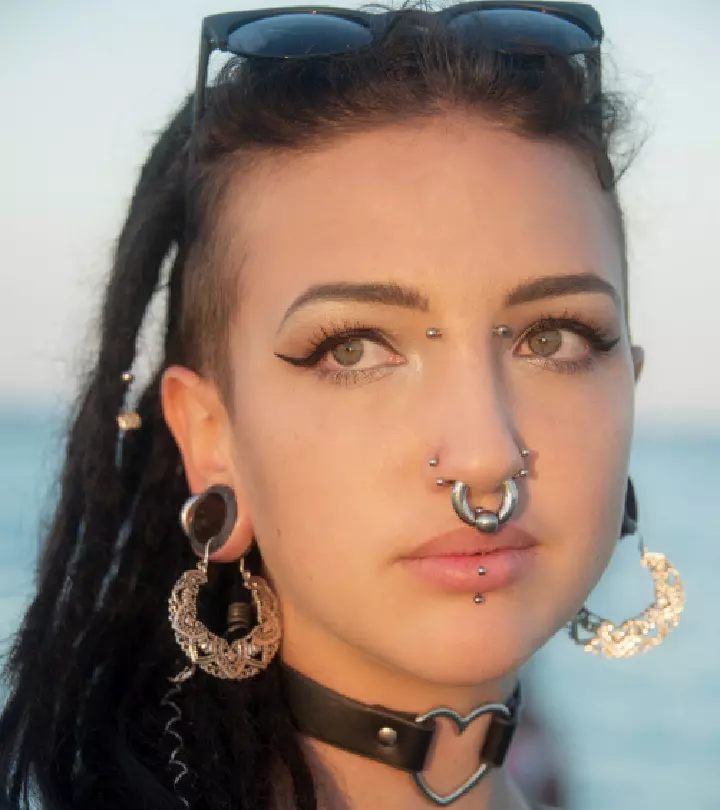



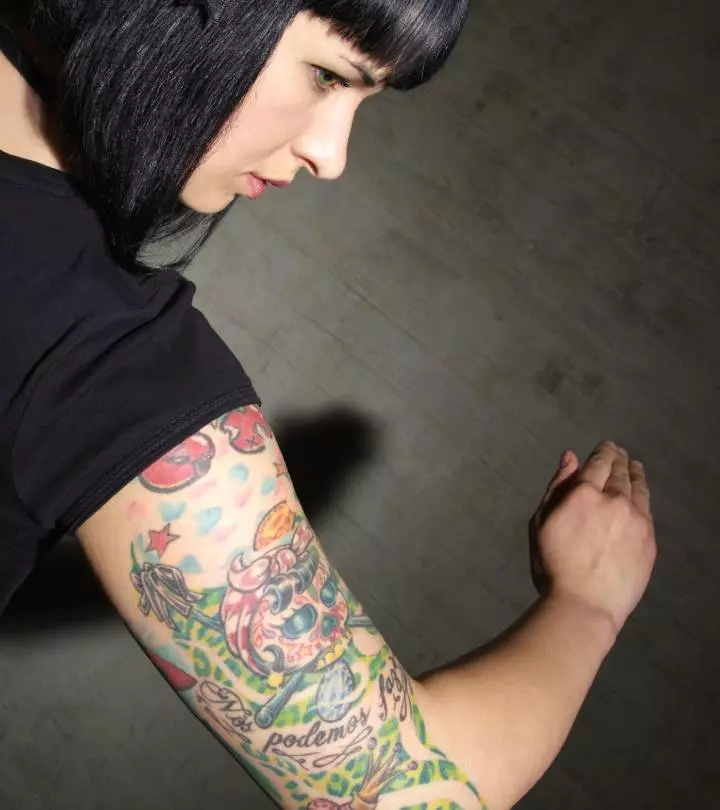


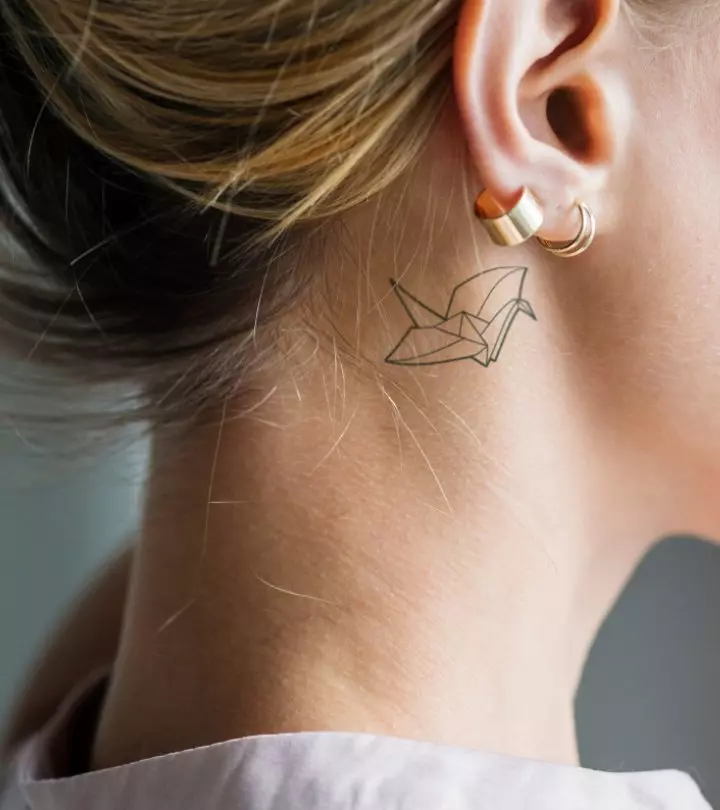
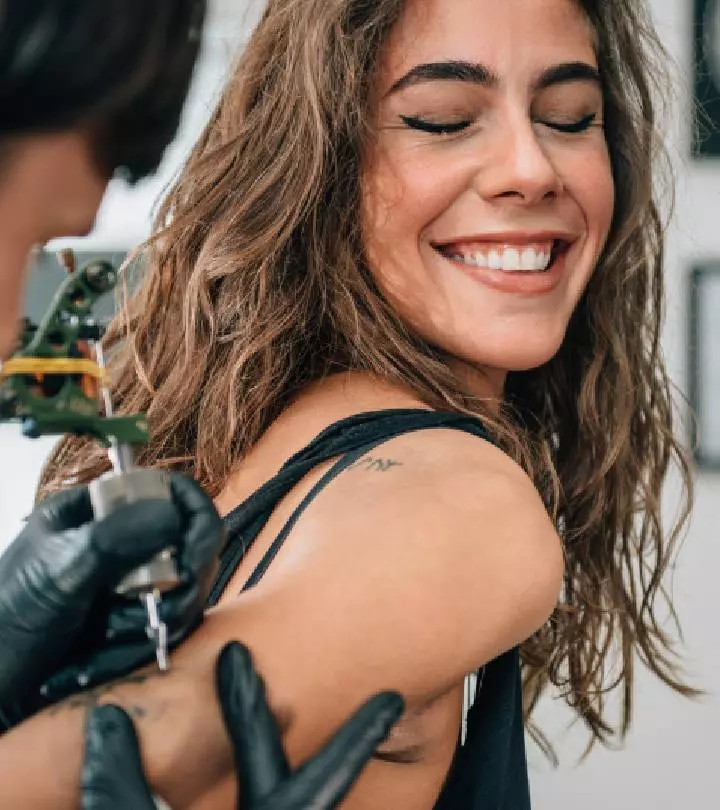
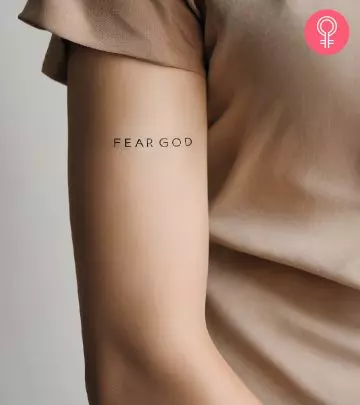

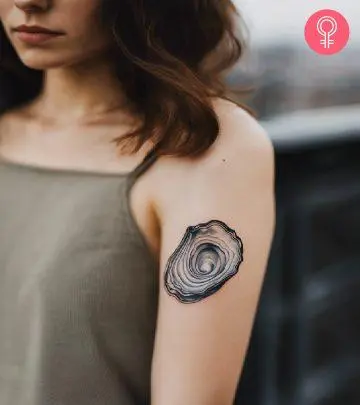

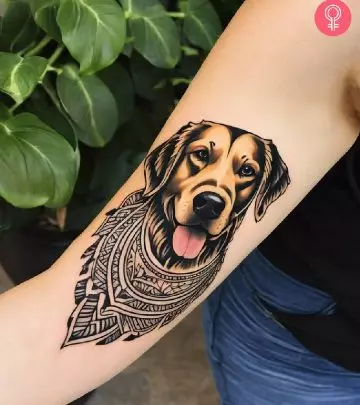
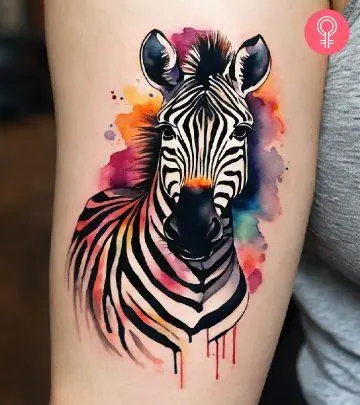
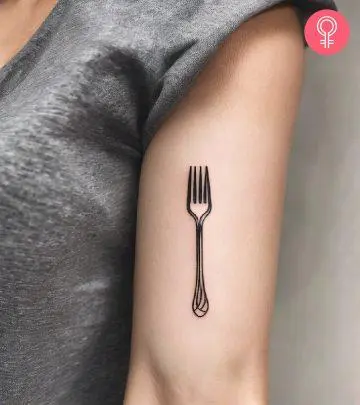
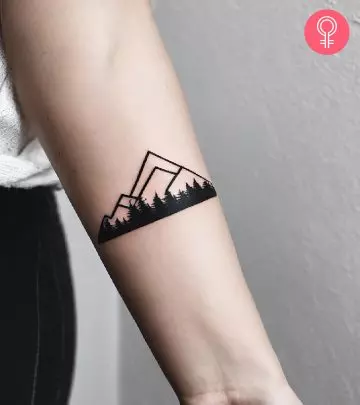


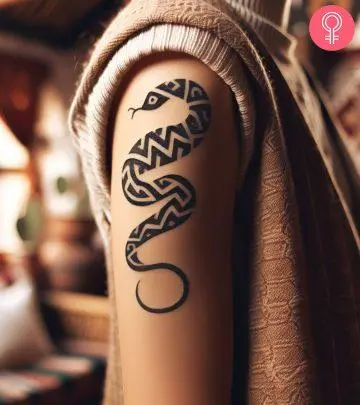
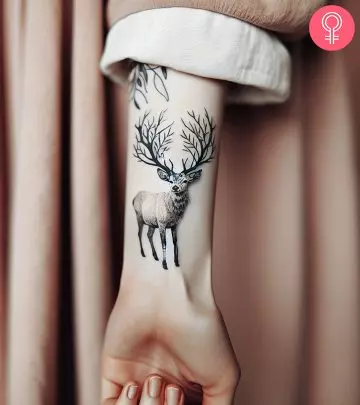
Community Experiences
Join the conversation and become a part of our empowering community! Share your stories, experiences, and insights to connect with other beauty, lifestyle, and health enthusiasts.